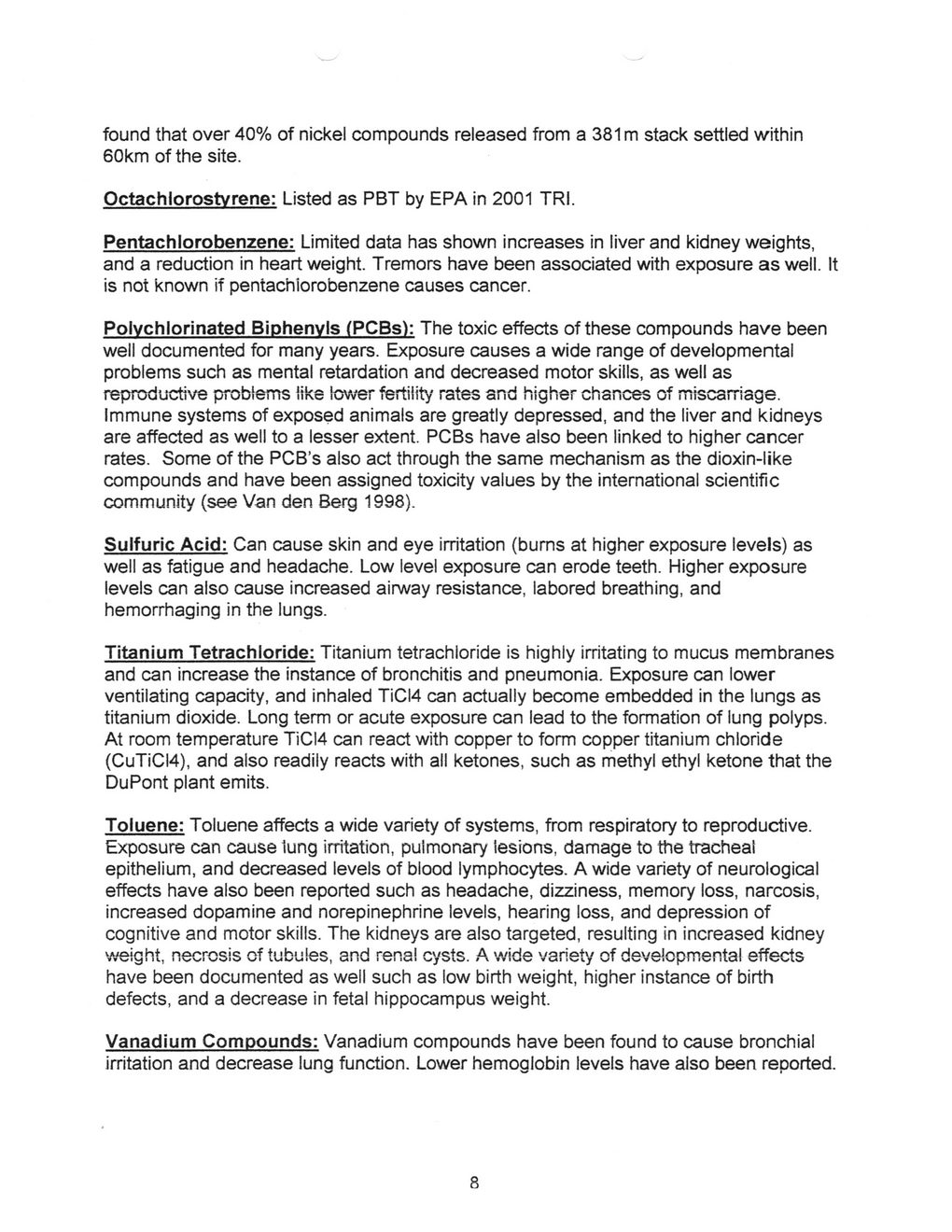This text was obtained via automated optical character recognition.
It has not been edited and may therefore contain several errors.
found that over 40% of nickel compounds released from a 381 m stack settled within 60km of the site. Octachlorostvrene: Listed as PBT by EPA in 2001 TRI. Pentachlorobenzene: Limited data has shown increases in liver and kidney weights, and a reduction in heart weight. Tremors have been associated with exposure as well. It is not known if pentachlorobenzene causes cancer. Polychlorinated Biphenyls (PCBs): The toxic effects of these compounds have been well documented for many years. Exposure causes a wide range of developmental problems such as mental retardation and decreased motor skills, as well as reproductive problems like lower fertility rates and higher chances of miscarriage. Immune systems of exposed animals are greatly depressed, and the liver and kidneys are affected as well to a lesser extent. PCBs have also been linked to higher cancer rates. Some of the PCB’s also act through the same mechanism as the dioxin-like compounds and have been assigned toxicity values by the international scientific community (see Van den Berg 1998). Sulfuric Acid: Can cause skin and eye irritation (burns at higher exposure levels) as well as fatigue and headache. Low level exposure can erode teeth. Higher exposure levels can also cause increased airway resistance, labored breathing, and hemorrhaging in the lungs. Titanium Tetrachloride: Titanium tetrachloride is highly irritating to mucus membranes and can increase the instance of bronchitis and pneumonia. Exposure can lower ventilating capacity, and inhaled TiCI4 can actually become embedded in the lungs as titanium dioxide. Long term or acute exposure can lead to the formation of lung polyps. At room temperature TiC!4 can react with copper to form copper titanium chloride (CuTiCI4), and also readily reacts with all ketones, such as methyl ethyl ketone that the DuPont plant emits. Toluene: Toluene affects a wide variety of systems, from respiratory to reproductive. Exposure can cause lung irritation, pulmonary lesions, damage to the tracheal epithelium, and decreased levels of blood lymphocytes. A wide variety of neurological effects have also been reported such as headache, dizziness, memory loss, narcosis, increased dopamine and norepinephrine levels, hearing loss, and depression of cognitive and motor skills. The kidneys are also targeted, resulting in increased kidney weight, necrosis of tubules, and renal cysts. A wide variety of developmental effects have been documented as well such as low birth weight, higher instance of birth defects, and a decrease in fetal hippocampus weight. Vanadium Compounds: Vanadium compounds have been found to cause bronchial irritation and decrease lung function. Lower hemoglobin levels have also been reported. 8

Dupont Air Hearings Sierra-Club-Recommendations-(09)